
Does peanut butter give you acne?
While peanut butter isn’t a clear-cut acne-causing villain, commercial varieties with added sugars and unhealthy oils might contribute to skin issues. Stick to natural peanut butter, consider nut butter alternatives, and maintain a balanced, low-glycemic diet for clearer skin.
ABOUT ME
Be beauty. Be plant-based!
As a former Registered Nurse and avid plant-muncher, I’m in love with how simple plant-based foods make it easy to be beautiful.

You’ll also love:
Cashews and Acne: Snackable Delight or Skin Saboteur?
Does Collagen Hold the Key to An Acne-Free Life?
Hello, my radiant, plant-based goddess! As you’ve been following your health journey, making conscious food choices and soaking up a wealth of wellness wisdom, have you been wondering: “Does peanut butter give you acne?”
You’re not alone. Many of us, in the quest for clear, beautiful skin, have also thought this. Amidst the rush of the day, the never-ending list of chores, and, of course, the craving for that hearty spoonful of peanut butter, maintaining radiant skin can seem like a tightrope walk. Well, worry not, we’re here to help you walk it with ease and grace.
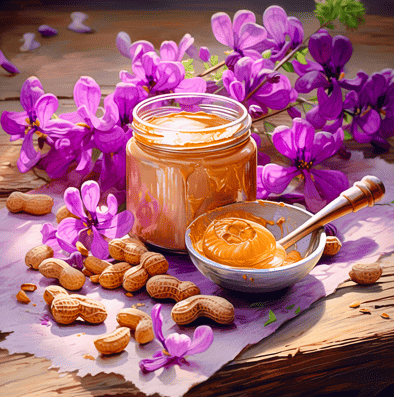
Misconceptions about Peanut Butter & Acne
Before you throw out your beloved jar of peanut butter, it’s vital to have a clear understanding of acne-prone skin.
Skip to: The Culprit Ingredients in Peanut Butter
The link between consuming peanut butter and acne is…complicated. While it’s true that certain components in peanut butter might lead to skin issues for some, it’s far from being an acne-causing villain for everyone.
Acne, that unwelcome party-crasher, is usually a result of a combination of factors like excess oil production, accumulation of dead skin cells, bacterial build-up, and certain lifestyle elements.
Our skin, as beautiful and glowing as it is, houses tiny factories called sebaceous glands that produce an oil called sebum. Now, sebum isn’t all bad. It keeps our skin soft and moisturised. But when it teams up with dead skin cells, it can block the pores leading to the formation of acne.
But what prompts this overproduction of sebum? It’s a mix of factors, hormonal changes being one of the key players. Hormones can spur the sebaceous glands into overdrive, causing them to produce more oil than necessary. Certain foods, particularly those with a high glycemic index, can also lead to an increase in insulin levels, which in turn can stimulate oil production.
Now, it’s time to turn our gaze towards peanut butter and see if it truly has a role in this oily narrative.
Peanut Butter: The Culprit Ingredients
Peanut butter, the ultimate comfort spread that we all adore, might harbour some potential acne-triggering ingredients. The main ingredient, peanuts, usually gets the blame. However, the real culprits might actually be the oils used in its production.
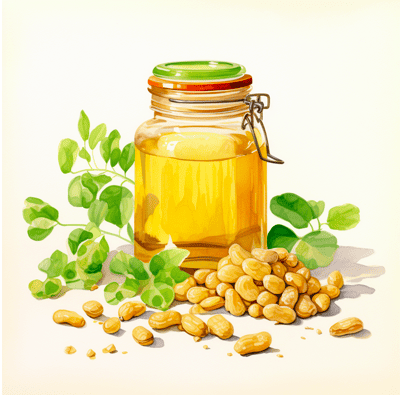
Many commercial peanut butter brands use soybean oil or peanut oil as a key ingredient. These oils are known to be high in omega-6 fatty acids. While these fatty acids are not inherently harmful, a diet high in omega-6 but low in omega-3 fatty acids may contribute to inflammation, potentially exacerbating acne.
Moreover, some individuals might be sensitive to a protein found in peanuts known as peanut agglutinin. This protein can potentially affect the lining of your gut, leading to inflammation and a variety of skin issues, including acne.
However, let’s not vilify our dear peanut butter just yet.
Is Eating Peanut Butter a Good Idea for Clear Skin?
Navigating the food landscape whilst on a quest for clear skin can be challenging. Peanut butter, with its mix of delicious flavour and nutrition, seems like a tricky one to categorise. But here’s the deal: moderation is key, and not all peanut butters are created equal.
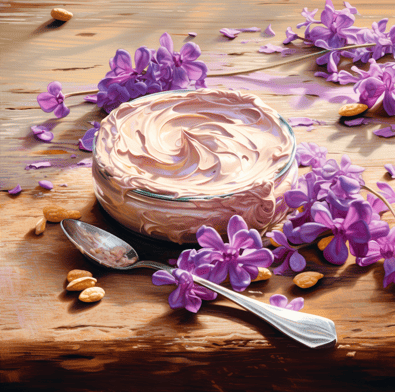
In the context of the glycemic index, peanut butter scores relatively low, meaning it has a minor impact on your blood sugar levels. High blood sugar levels can lead to increased insulin levels, which in turn may stimulate your oil glands to produce more sebum, setting the stage for acne.
However, many commercial peanut butter brands come with added sugars and oils, which could affect its overall glycemic index and potentially lead to increased insulin levels. Hence, even though peanut butter in its pure form is a low-glycemic food, the additional ingredients could potentially trigger hormonal acne.
A Closer Look at Your Diet
If clear skin is your ultimate goal, it’s crucial to maintain a healthy, plant-based diet. Certain foods have been shown to potentially contribute to acne. Among these are dairy products, white bread, and even whey protein.
Dairy products, particularly those high in hormones, can stimulate your oil glands. White bread, being a high-glycemic food, can cause a spike in your blood sugar levels, leading to increased insulin levels and, subsequently, increased oil production.
Perhaps it’s not your peanut butter giving you acne, but the toast you eat with it instead?
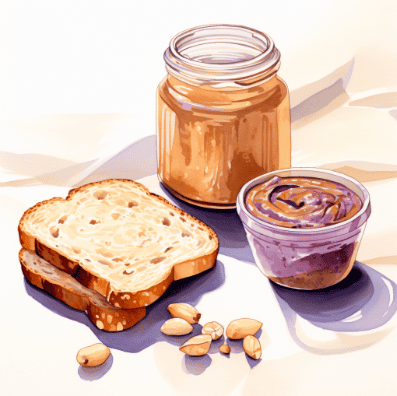
Whey protein is a derivative of dairy that’s popular among fitness enthusiasts. Some studies have shown that consuming whey protein can lead to hormonal imbalances, resulting in overactive oil glands and acne.
However, this doesn’t mean you need to completely eliminate these foods from your diet. Instead, it might be a good idea to consume them in moderation and observe how your body and skin respond.
In the next section, we’ll explore healthier alternatives to some of these foods, including peanut butter.
Swapping for Healthy Alternatives
So, as a radiant, health-conscious woman juggling a thousand tasks, what are your best alternatives to satisfy your cravings, maintain a balanced diet, and keep that skin clear and glowing?
If you’re a fan of spreads and butters, consider alternatives like cashew butter or almond butter. They’re packed with healthy fats and have a lower omega-6 to omega-3 ratio, reducing potential inflammation.
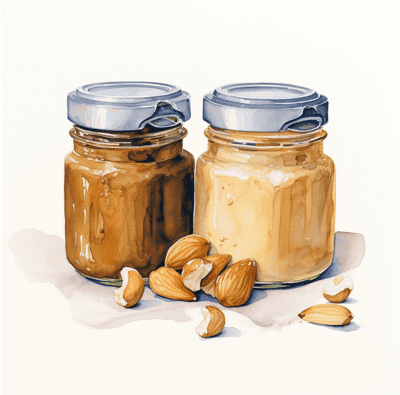
And it’s not just about replacing peanut butter; there are other food swaps you can make for clear skin. Replace white bread with whole grain bread to keep your blood sugar levels stable. Opt for non-dairy protein sources like pea protein or hemp protein instead of whey protein.
Enhancing Your Immune System for Clearer Skin
Maintaining clear, healthy skin is not just about the external factors and dietary habits; it’s equally about nourishing your body from within. Your immune system plays a significant role in managing acne breakouts. A strong immune system can fight off the bacteria causing acne, leading to healthier skin.
To give your immune system that extra boost, focus on consuming foods rich in Vitamin E. This powerful antioxidant helps enhance your immune system and also contributes to skin health. Avocados, almonds, and spinach are excellent sources of Vitamin E.
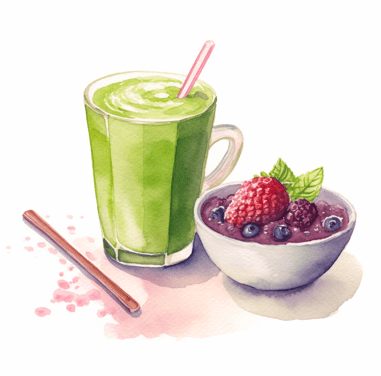
Green tea is also great for boosting your immune system and preventing infection, which could help your skin prevent acne.
You might like: Matcha Magic: The Power of Green Tea for Acne-Free Skin
Remember, achieving clear skin is an ongoing journey, and a well-rounded, balanced diet plays a huge role in it. In the following section, we’ll wrap up our discussion and provide some key takeaways.
Conclusion: Does Peanut Butter Give You Acne?
We know how important clear, radiant skin is to you, our plant-based goddess! While it may seem like navigating the world of health, beauty, and peanut butter is a balancing act, remember, it’s all about moderation and understanding what works for your body.
Peanut butter isn’t the acne-causing villain it’s often made out to be. Certain ingredients in commercially produced peanut butter, such as soybean oil or peanut oil, may potentially contribute to inflammation and acne for some individuals. But pure, unprocessed peanut butter consumed in moderation is unlikely to be a sole cause of acne.
Stay conscious of your diet, and watch out for high-glycemic foods and dairy products that can lead to increased oil production and potentially, acne breakouts. It’s equally crucial to boost your immune system with antioxidant-rich foods for healthier, clear skin.
With a little attention and care, you can maintain your health, enjoy your favorite foods, and keep your skin glowing!
FAQ: Does peanut butter give you acne?
Q: Is peanut butter not good for your skin?
A: While peanut butter isn’t inherently bad for your skin, commercial versions with added sugars and unhealthy hydrogenated oils might affect sebum production and contribute to skin problems. It’s best to stick with natural, unprocessed peanut butter for overall health and skin wellness.
Q: Is peanut good for acne?
A: Peanuts, in their natural form, aren’t specifically good or bad for acne. They are high in essential fatty acids, which are beneficial for overall health. However, if consumed excessively, they may contribute to too much omega-6, leading to potential inflammation and acne formation.
Q: What foods cause pimples?
A: Certain foods are known to potentially trigger pimples, such as fast food, cow’s milk, and high-glycemic foods like white bread and pastries. These worst foods can increase sebum production, leading to clogged hair follicles and acne.
Q: Is nut butter good for acne?
A: Nut butters like almond or cashew butter can be a healthy snack for individuals with acne. They contain essential fatty acids and anti-inflammatory properties that can promote healthy skin. Always opt for versions without added sugars or hydrogenated vegetable oils.
Q: What foods get rid of pimples?
A: Foods rich in anti-inflammatory properties and antioxidants like fresh fruits, dark chocolate, and whole foods can help reduce acne symptoms. Also, a low-glycemic diet comprising whole grains and lean proteins may aid in managing acne.
Q: What are 7 foods that cause acne?
A: Seven foods that can potentially trigger acne include cow’s milk, fast food, sugary drinks, white bread, pastries, hydrogenated oils, and certain cheeses. However, acne responses to specific foods can vary from person to person.
Q: What foods to avoid to get clear skin?
A: To achieve clear skin, you might want to avoid foods high in sugar and unhealthy fats, such as fast food, pastries, and cow’s milk. Opt for a healthy diet comprising whole grains, fresh fruits, and lean proteins instead.
Q: What foods worsen your skin?
A: Foods high in sugars, unhealthy fats, and dairy products, especially skim milk, can potentially worsen your skin condition by increasing inflammation and oil production. Fast food is often one of the worst culprits.
Q: What should I drink for clear skin?
A: Drinking plenty of water is essential for clear, healthy skin. Also, consider drinks like green tea for its anti-inflammatory properties and antioxidant content. Always seek medical advice for persistent skin issues.
Q: Are there any acne-safe alternatives to cow’s milk?
A: Yes, acne-safe alternatives to cow’s milk include plant-based milk such as coconut milk and rice milk. They are less likely to trigger acne compared to cow’s milk.
Q: Can maintaining a healthy diet improve acne scars?
A: A healthy diet can contribute to overall skin health and may help in the healing process of acne scars. Foods rich in antioxidants and anti-inflammatory properties can support skin repair.
Q: Do weight loss and acne have a connection?
A: While weight loss itself doesn’t directly impact acne, the dietary changes associated with it—such as reducing sugar, fast food, and adopting a low-glycemic diet—can potentially improve acne symptoms. Always consult a doctor or a dietitian for personalized advice.
Q: Are topical acne treatments like benzoyl peroxide more effective than dietary changes?
A: Both topical treatments and dietary changes play a crucial role in managing acne. While benzoyl peroxide can effectively treat existing acne, dietary changes can help prevent new acne from forming and contribute to overall skin health. Always seek medical advice for personalized treatment strategies.
References
- Bilal M, Shabbir MA, Xiaobo Z, et al. Characterization of peanut seed oil of selected varieties and its application in the cereal-based product. J Food Sci Technol. 2020;57(11):4044-4053. doi:10.1007/s13197-020-04437-y
- Deol P, Fahrmann J, Yang J, et al. Omega-6 and omega-3 oxylipins are implicated in so https://www.ncbi.nlm.nih.gov/pmc/articles/PMC5624939/ d obesity in mice. Sci Rep. 2017;7(1):12488. Published 2017 Oct 2. doi:10.1038/s41598-017-12624-9
- Djuricic I, Calder PC. Beneficial Outcomes of Omega-6 and Omega-3 Polyunsaturated Fatty Acids on Human Health: An Update for 2021. Nutrients. 2021;13(7):2421. Published 2021 Jul 15. doi:10.3390/nu13072421
- Reygaert WC. Green Tea Catechins: Their Use in Treating and Preventing Infectious Diseases. Biomed Res Int. 2018;2018:9105261. Published 2018 Jul 17. doi:10.1155/2018/9105261